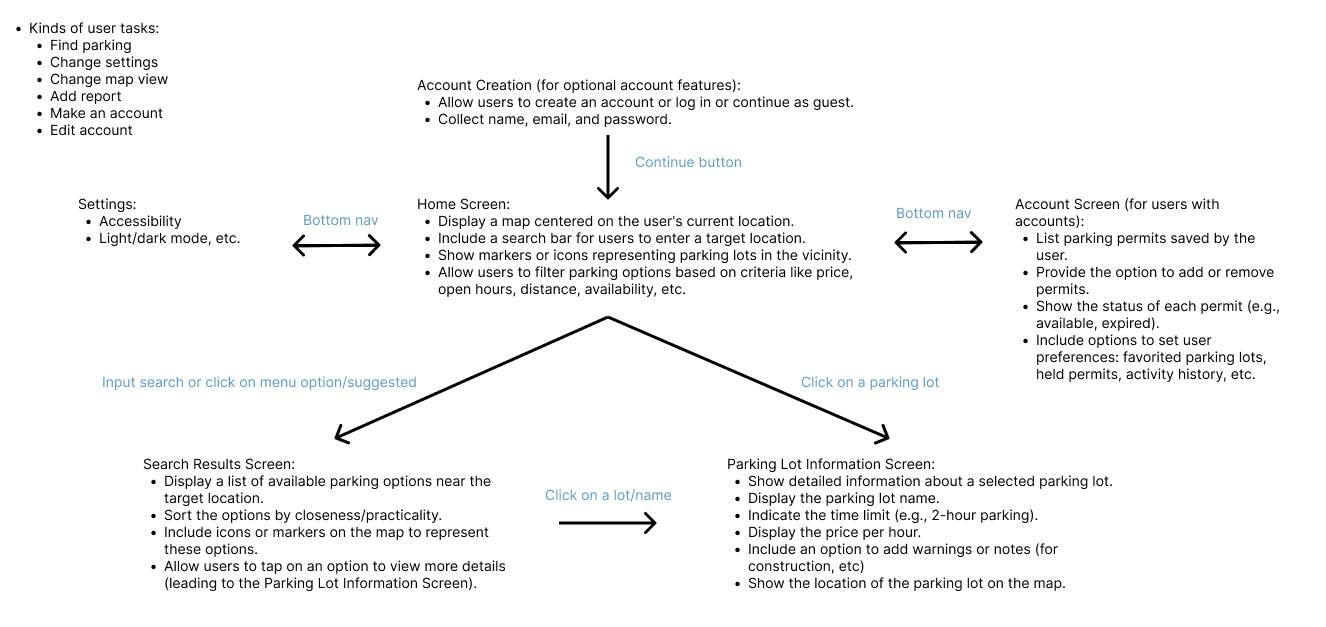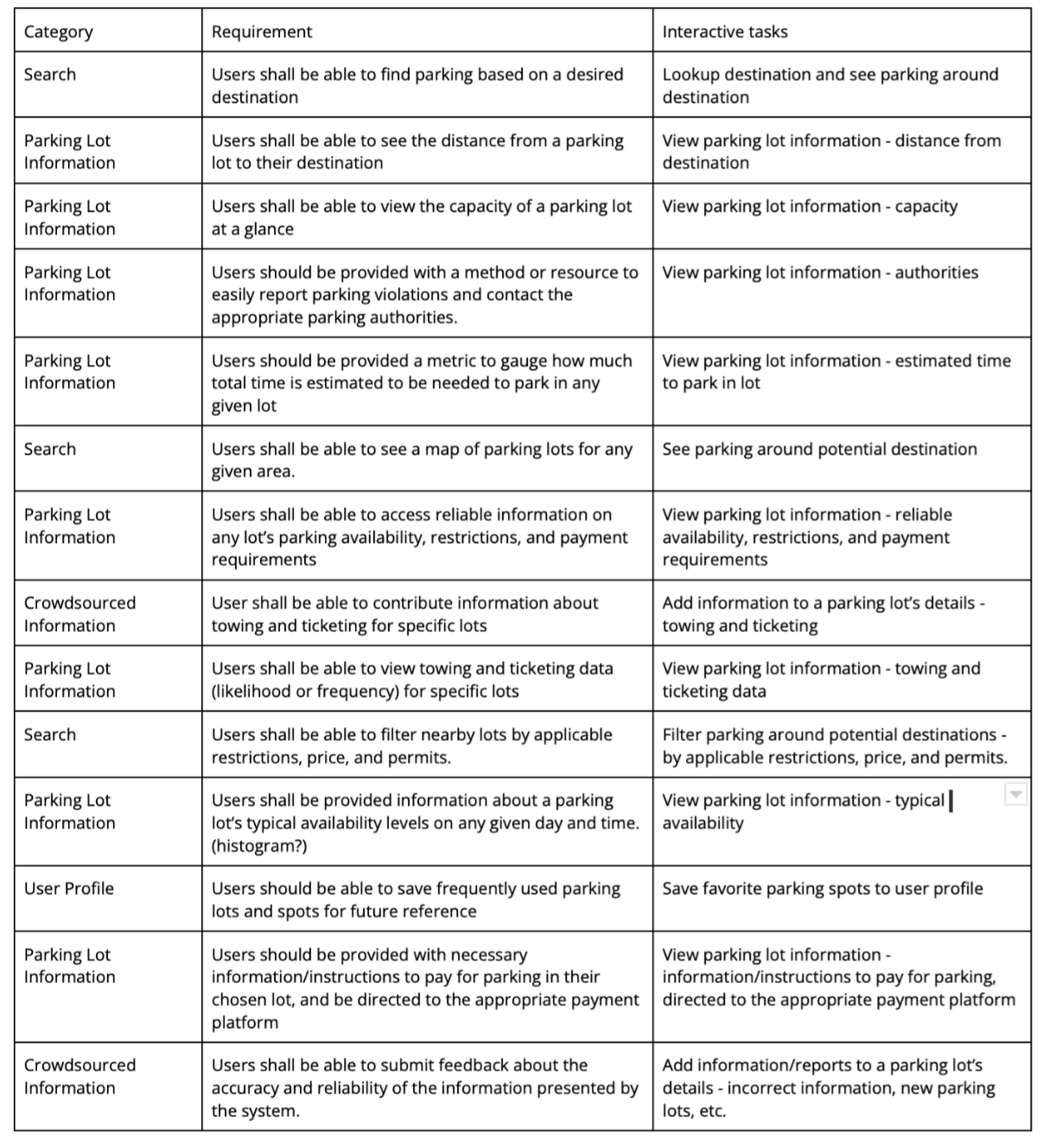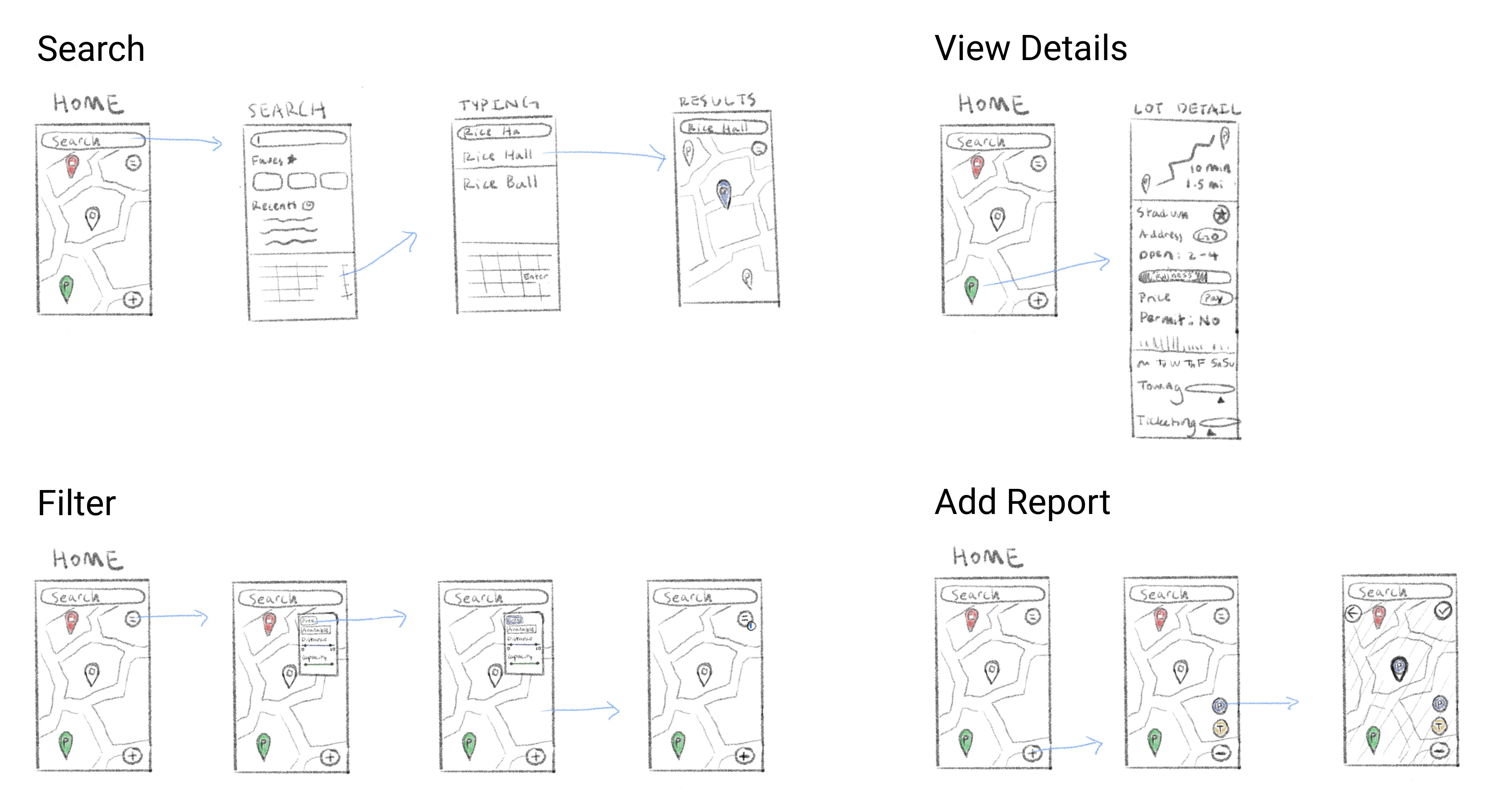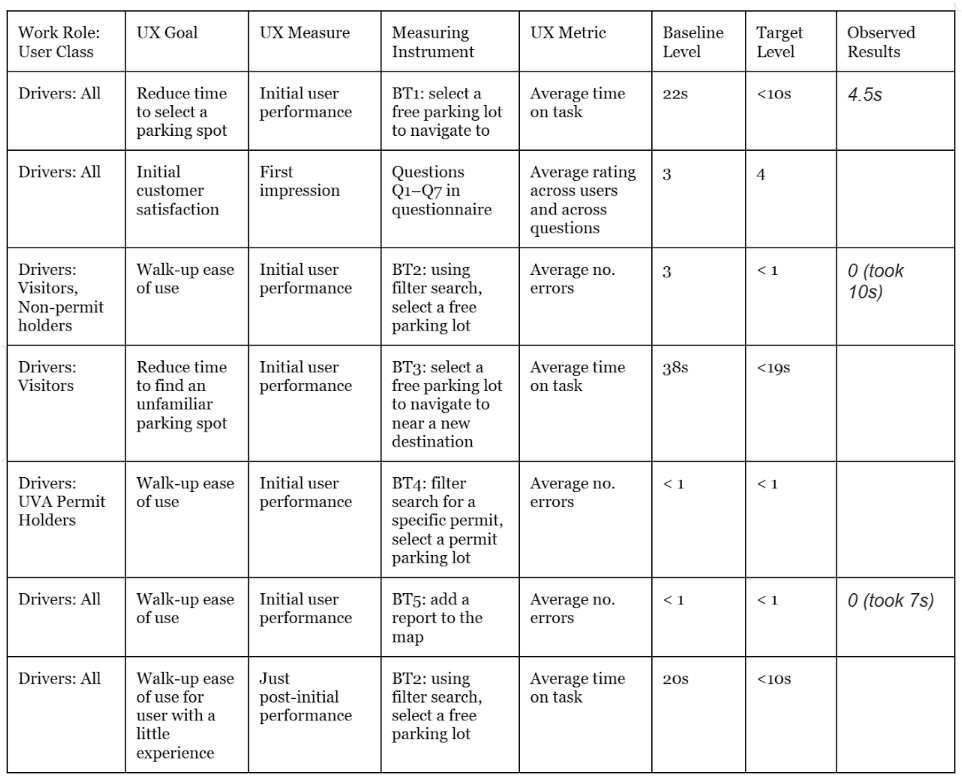Based on this sketch, we developed a high-fidelity prototype to
evaluate our design's effectiveness in making parking lots
discoverable.

Digestible Map
The map allows users
to see the status of many parking lots at a glance, reducing
cognitive load through the use of intuitive symbols and color
coding. Tapping on corresponding pins on the map brings up the
parking lot’s details.
Informative Details
This information
screen includes the lot’s pricing, open hours, and capacity
levels. Graphs indicating the capacity, activity, and risk of
towing and ticketing provide valuable and easily understandable
information to users. Finally, the "Pay" and
"Go" buttons allow users to transition from searching to
navigation to payment more seamlessly.


Smart Search
Clicking into the search
box brings up favorites and recent searches, ensuring easy access
without cluttering the home screen. Selecting one of the results
brings users to a map view of the location.
Crowdsourced Reports
Tapping the
report button pops out into a menu of report options such as
closures, hazards, police sightings, and tow trucks. These reports
can be placed on the map, and remain available on every user’s map
for several hours.

Below is the list of UX targets I created based on our initial
goals of reducing annoyance and time spent searching for a spot
for users.
Now with our prototype and UX targets, we conducted a usability
test with 9 participants to
determine the effectiveness of our solution and potential points
for improvement.
We asked them to complete the
benchmark tasks as written in
the UX target table. At the end, participants were asked to
complete
this survey.
Overall, the lowest average was on the question of how likely
users would be to use the fully developed app. While the average
rating for this question was still positive, it could suggest that
users aren’t very excited about
the potential for this app to solve the problem of parking. Going
forward, this lack of excitement or certainty is an insight that
the team should work on improving.
The second lowest averages were tied across 3 questions. A lower
rating on these questions could indicate that the user flows
for
in-app navigation and parking lot search could be
improved, as well as
the quantity and clarity of the lot details
page content should be improved.
Our primary goal was to reduce user frustration surrounding and
time spent searching for parking. The success of our app in
solving this problem heavily depends on presenting reliable data,
which is currently represented by static placeholders in the
prototype.
Thus, the next steps for this project would
be
integrating live parking data
into the app, as well as figuring out the backlogged
user profile and settings
functionalities.








